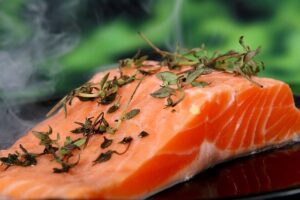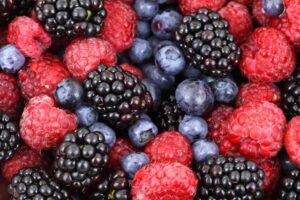Introduction
Pizza is a beloved food worldwide, known for its delicious combination of dough, sauce, cheese, and various toppings. However, when it comes to nutrition, many people wonder about the protein content of this popular dish. In this article, we will explore how much protein pizza typically contains and discuss some factors that can influence its protein content.
Protein Content in Pizza
The protein content of pizza can vary depending on several factors, including the type of crust, toppings, and portion size. Generally, the protein in pizza comes from the cheese, meat, and vegetable toppings. Let’s take a closer look at each component:
Cheese
Cheese is a significant source of protein in pizza. Mozzarella, the most commonly used cheese on pizza, contains about 6 grams of protein per ounce. However, the amount of cheese used can vary from one pizza to another, affecting the overall protein content. Additionally, some pizzas may use other types of cheese, such as cheddar or Parmesan, which have slightly different protein levels.
Meat Toppings
Meat toppings like pepperoni, sausage, or chicken can significantly contribute to the protein content of pizza. These toppings can contain varying amounts of protein depending on the type and brand. For example, pepperoni typically contains around 6 grams of protein per ounce, while chicken can provide around 7 grams of protein per ounce. Keep in mind that the protein content may vary depending on the specific brand and preparation method.
Vegetable Toppings
While vegetables are not as protein-dense as cheese or meat, they still contribute to the overall protein content of pizza. Toppings like mushrooms, onions, and bell peppers contain small amounts of protein. However, the protein content from vegetables is generally lower compared to cheese and meat toppings.
Crust
The crust of the pizza, whether it’s thin, thick, or stuffed, usually contains a moderate amount of protein. The protein content in the crust primarily comes from the flour used in its preparation. However, the protein content in the crust is relatively lower compared to the cheese and toppings.
Factors Influencing Protein Content
Several factors can influence the protein content of pizza, including:
Toppings and Portion Size
The choice and amount of toppings on a pizza can significantly affect its protein content. Pizzas with more cheese and meat toppings will generally have higher protein levels compared to vegetarian options or those with fewer toppings. Additionally, the portion size also plays a role in determining the overall protein content. Larger slices or more substantial portions will naturally contain more protein.
Customization and Variations
Pizza is a versatile dish, and its protein content can vary depending on customization and regional variations. For example, a meat lover’s pizza with multiple meat toppings will have higher protein content than a plain cheese pizza. Similarly, different regional styles of pizza may have unique toppings that can impact the protein levels.
Conclusion
The protein content of pizza can vary depending on factors such as cheese, meat toppings, vegetable toppings, and crust type. Cheese and meat toppings are the primary sources of protein in pizza, while vegetable toppings and crust contribute to a lesser extent. The exact protein content can also be influenced by the choice of toppings, portion size, and regional variations.
References
– USDA FoodData Central: fdc.nal.usda.gov
– Domino’s Pizza: dominos.com
– Pizza Hut: pizzahut.com













